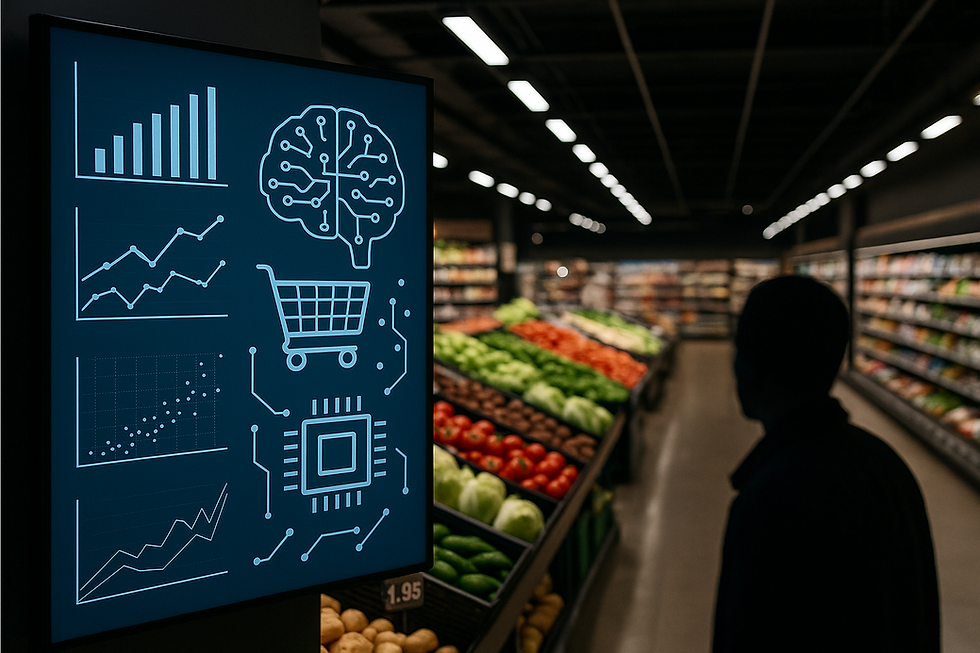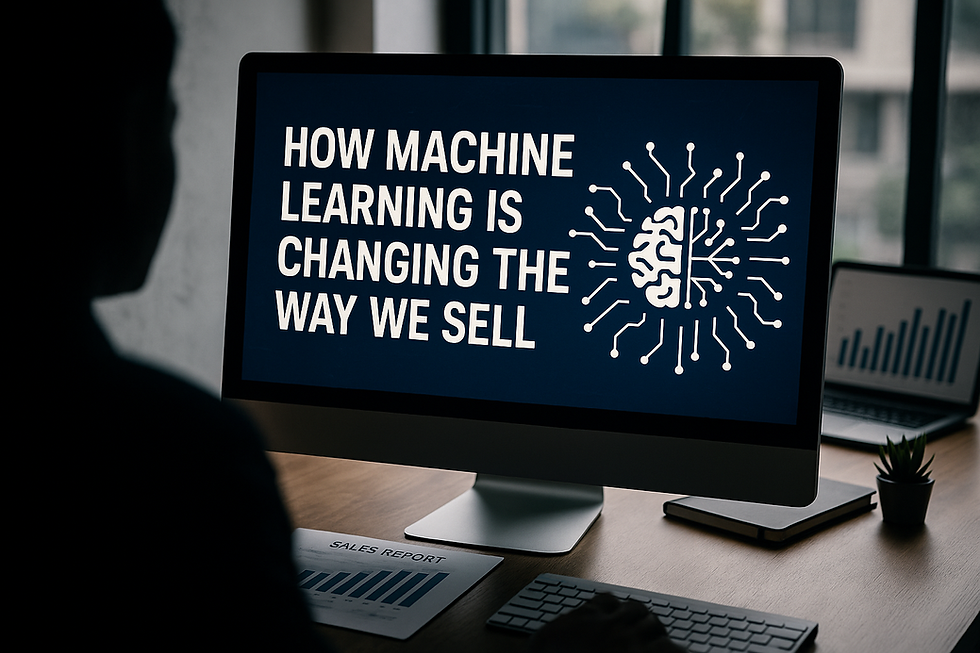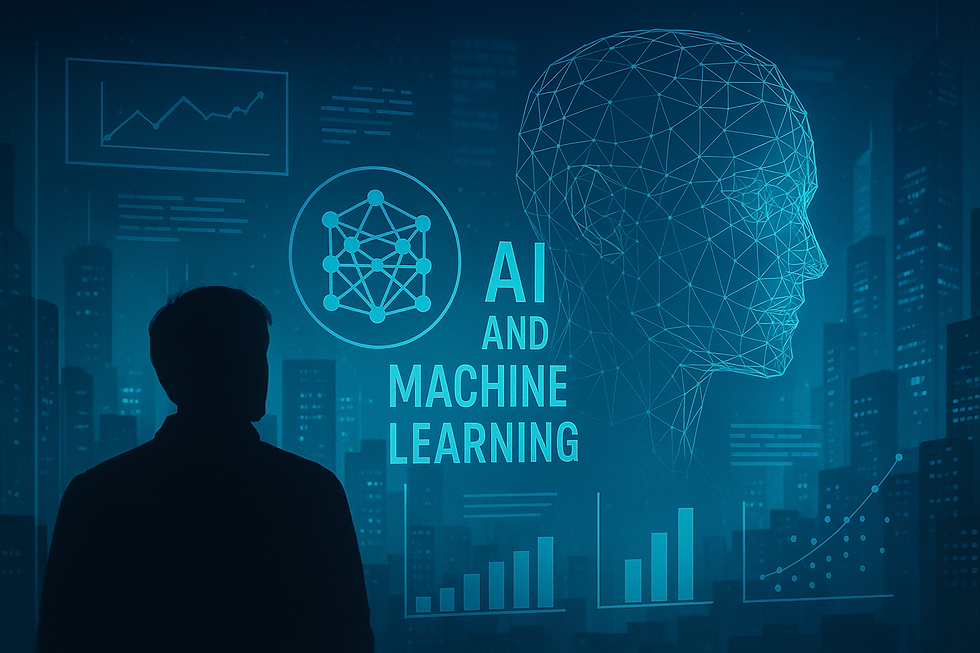How Machine Learning Is Used in Retail: The Hidden Engine Behind Modern Commerce
- Muiz As-Siddeeqi

- Aug 21
- 6 min read

How Machine Learning Is Used in Retail: The Hidden Engine Behind Modern Commerce
They weren’t just scanning barcodes.
They weren’t just counting inventory.
They were rewriting retail—one algorithm at a time.
For decades, the retail industry ran on gut instinct, past sales, and manual spreadsheets. But behind the closed doors of giants like Walmart, Amazon, and Target, something transformative has been happening. Not hypothetical. Not futuristic. Not buzzword fluff. We're talking about real, measurable, documented machine learning systems powering billions in decisions, optimizing shelves, personalizing offers, reducing waste, and predicting what you want before even you know it.
And this blog? This isn't generic.
This isn’t a copy-paste of industry clichés.
This is a first-in-the-world deep-dive into how machine learning is truly used in retail—with real companies, real systems, real ROI, and verified statistics.
Let’s walk through a revolution that’s already here.
Bonus: Machine Learning in Sales: The Ultimate Guide to Transforming Revenue with Real-Time Intelligence
A Quiet Revolution: Why Machine Learning in Retail Isn’t Optional Anymore
Retail is no longer about products. It's about data.
Every product scanned, every footstep in an aisle, every abandoned cart, every returned item, and every wishlist—it's all data. And the difference between retail brands who thrive and those who die?
Those who transform that data into decisions.
Machine learning (ML) is not “nice-to-have”.
It’s the difference between survival and extinction.
1. Amazon: The Poster Child of ML-Driven Retail
Let’s start with the king of predictive retail.
Amazon’s secret sauce isn’t just its vast inventory—it’s machine learning.
Inventory Forecasting at Scale
Amazon’s inventory prediction model, known as “hands off the wheel”, reduced human interventions in demand forecasting by 90%. This model uses deep learning to predict what products will be needed, where, and when—across millions of SKUs and thousands of warehouses.
Result: As of 2022, this system reduced forecasting errors by 15% across 43 million products [Source: Amazon Science].
Personalized Recommendations
According to McKinsey, 35% of Amazon’s sales come directly from its recommendation engine [Source: McKinsey, 2021]. This isn't magic—it’s collaborative filtering, a machine learning technique analyzing your behavior and comparing it to others to suggest what you’re most likely to buy.
Real Impact: These suggestions generate $90 billion+ in annual revenue [Source: Fortune, 2022].
2. Walmart: Real-Time Retail Optimization with ML
Walmart, the world’s largest retailer, isn't just a logistics beast. It's a machine learning powerhouse.
Retail Link: The ML Nerve Center
Walmart’s internal data-sharing platform “Retail Link” feeds real-time POS data to machine learning algorithms that inform stock decisions, pricing, and supplier negotiations.
Shelf Scanner Robots:
In 2020, Walmart deployed Bossa Nova robots in 500+ stores to use computer vision and ML to scan aisles for out-of-stock items. These bots improved shelf accuracy by 95% before the initiative was scaled back post-pandemic.
Wastage Reduction: Walmart’s ML models for perishables reduced food waste by 20% [Source: Wall Street Journal, 2019].
3. Target: Behavioral Clustering to Predict Life Events
Target's story is not just famous—it’s legendary.
The Pregnancy Prediction Model
Using ML on purchase history, Target’s data team built a predictive model that could determine if a customer was pregnant—and even predict the due date.
A now-infamous 2012 case study revealed the model detected a teen girl’s pregnancy before her father knew—based purely on changes in her buying patterns (unscented lotion, vitamins, etc.) [Source: New York Times, 2012].
Impact: The initiative led to a 20% jump in baby product sales in targeted households.
4. Kroger: ML in Dynamic Pricing & Customer Engagement
Kroger, America’s largest supermarket chain by revenue, is quietly running one of the most sophisticated ML-based retail programs.
Dynamic Price Optimization
Kroger uses ML models to dynamically price thousands of products daily, adjusting for demand, expiration, and competitor activity.
Edge AI in Stores:
Their stores now run Edge computing ML models to instantly react to in-store events like customer foot traffic spikes, helping manage staff allocation and shelf refilling in real time [Source: Microsoft/Kroger partnership, 2020].
Result: Their ML-driven loyalty programs and pricing strategies generated a 30% higher basket value for enrolled customers [Source: Kroger Annual Report, 2021].
5. Sephora: ML + AR = Personalized Beauty at Scale
Beauty is personal. Sephora made it algorithmic.
Color IQ & Virtual Artist
Sephora’s Color IQ uses computer vision and machine learning to scan a customer’s skin tone and recommend the most accurate product match. Their Virtual Artist, powered by ModiFace (acquired by L’Oréal), allows real-time AR makeup trials.
Conversion Boost: Customers who used the ML-powered Virtual Artist were 11% more likely to purchase [Source: Harvard Business Review, 2019].
ROI: The feature increased overall online conversion rates by 8.5%.
6. H&M: ML in Supply Chain and Trend Forecasting
H&M once struggled with overstocking. Enter ML.
Demand Forecasting Overhaul
After a 2017 inventory crisis that left them with over $4 billion in unsold clothes, H&M turned to machine learning. Their demand prediction models analyze climate data, social media trends, sales velocity, and even local festivals.
Result: In 2020, ML forecasting helped reduce unsold stock by 25% and improve margins across 2,000+ stores [Source: Business of Fashion].
7. Zara: Fast Fashion Gets Faster with ML
Zara doesn’t guess trends. They listen to data.
Zara’s ML models monitor social media, online feedback, and in-store sales in real time. The moment a style begins trending, they feed the insight into their short-run manufacturing system to get that product in stores within 3 weeks.
Speed-to-Market Advantage:
Thanks to ML-enhanced feedback loops, Zara launches 24 new clothing collections per year, nearly 3x the industry average [Source: Forbes, 2020].
8. Starbucks: Machine Learning for Your Morning Latte
Yes, even your coffee is optimized by algorithms.
DeepBrew: The ML Heart of Starbucks
“DeepBrew” is Starbucks’ in-house machine learning engine. It personalizes offers, manages inventory, and even adjusts store staffing based on local weather and footfall predictions.
Impact: Personalized offers powered by DeepBrew led to a 3x higher redemption rate compared to generic promotions [Source: Starbucks Investor Presentation, 2021].
9. Home Depot: ML for Inventory, Search & Recommendations
Predictive Inventory Management
Home Depot’s ML algorithms predict which items to restock based on hyperlocal demand, weather, and even local construction permits.
Search Algorithm Improvements:
In 2019, Home Depot revamped their search function using natural language processing (NLP) models—leading to a 10% lift in online conversions [Source: Home Depot Tech Blog, 2019].
10. Real ROI Benchmarks in Retail ML
Let’s pause the stories.
Let’s look at the numbers.
According to McKinsey (2022):
Retailers using ML for personalization see 5%–15% revenue uplift.
ML-powered inventory forecasting cuts stockouts by up to 50%.
Dynamic pricing can boost margins by 10%+.
ML reduces marketing campaign waste by 30–40%.
AI-driven supply chain optimization lowers logistics cost by 10%–20%.
Capgemini (2021) found that 28% of retailers already using AI/ML have seen their profits increase by more than 10%.
11. Lesser-Known Use Cases: Hidden ML Gems in Retail
Let’s move beyond the usual stories.
a. In-store Heat Maps with Computer Vision
Retailers like Lowe’s and Carrefour are using ML-powered ceiling cameras to track movement patterns. These “heat maps” optimize product placement and signage.
b. Sentiment Analysis from Reviews
Best Buy and Newegg are applying NLP to customer reviews to detect negative sentiment trends—automatically alerting product teams before issues escalate.
c. ML for Returns Optimization
Zappos uses machine learning to predict return risk before a product is sold. If a customer tends to return shoes that run narrow, they’ll recommend alternatives proactively.
12. Challenges That Still Need Solving
Not everything is rosy.
Data quality issues plague legacy systems.
Bias in ML models—especially for fashion or beauty.
Privacy concerns, especially with behavioral tracking.
Talent shortage: 62% of retail CIOs report difficulty in hiring ML specialists [Source: Gartner, 2023].
But even with these challenges, the direction is irreversible. Retail without ML is like maps without GPS.
Final Thoughts: This Is Just the Beginning
The most powerful machine learning systems in retail?
They don’t scream.
They don’t shine.
They work silently, behind every cart, every click, every purchase.
Retailers who harness ML are not just optimizing—they’re redefining commerce.
They’re transforming warehouses into predictive engines.
They’re turning customer data into personalization gold.
They’re fighting waste, beating inflation, outpacing trends.
And they’re doing it with real models. Real math. Real machine learning.
So next time you buy something online, step into a store, or even sip your coffee—pause.
Because chances are, an algorithm whispered first.

$50
Product Title
Product Details goes here with the simple product description and more information can be seen by clicking the see more button. Product Details goes here with the simple product description and more information can be seen by clicking the see more button

$50
Product Title
Product Details goes here with the simple product description and more information can be seen by clicking the see more button. Product Details goes here with the simple product description and more information can be seen by clicking the see more button.

$50
Product Title
Product Details goes here with the simple product description and more information can be seen by clicking the see more button. Product Details goes here with the simple product description and more information can be seen by clicking the see more button.






Comments